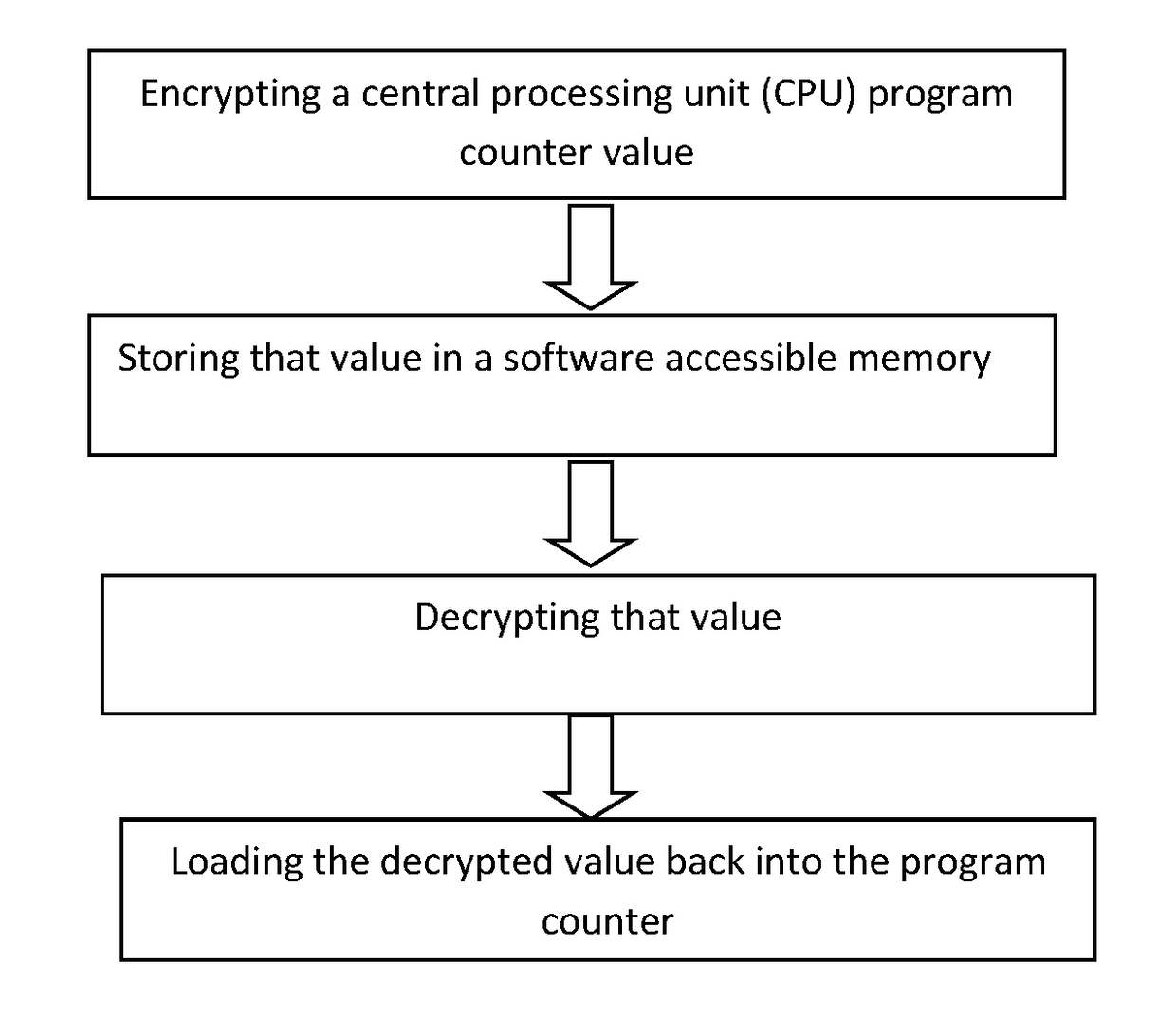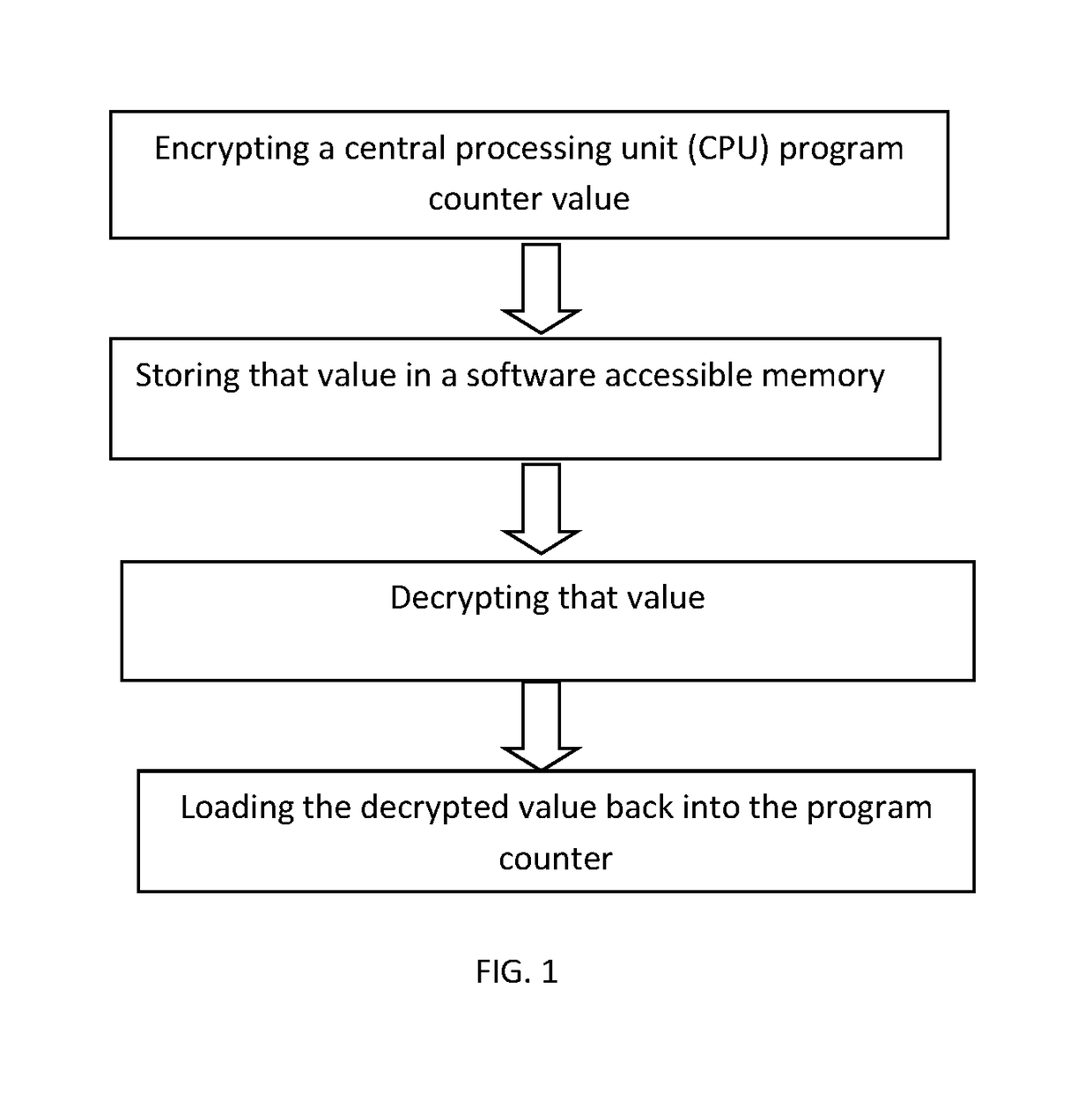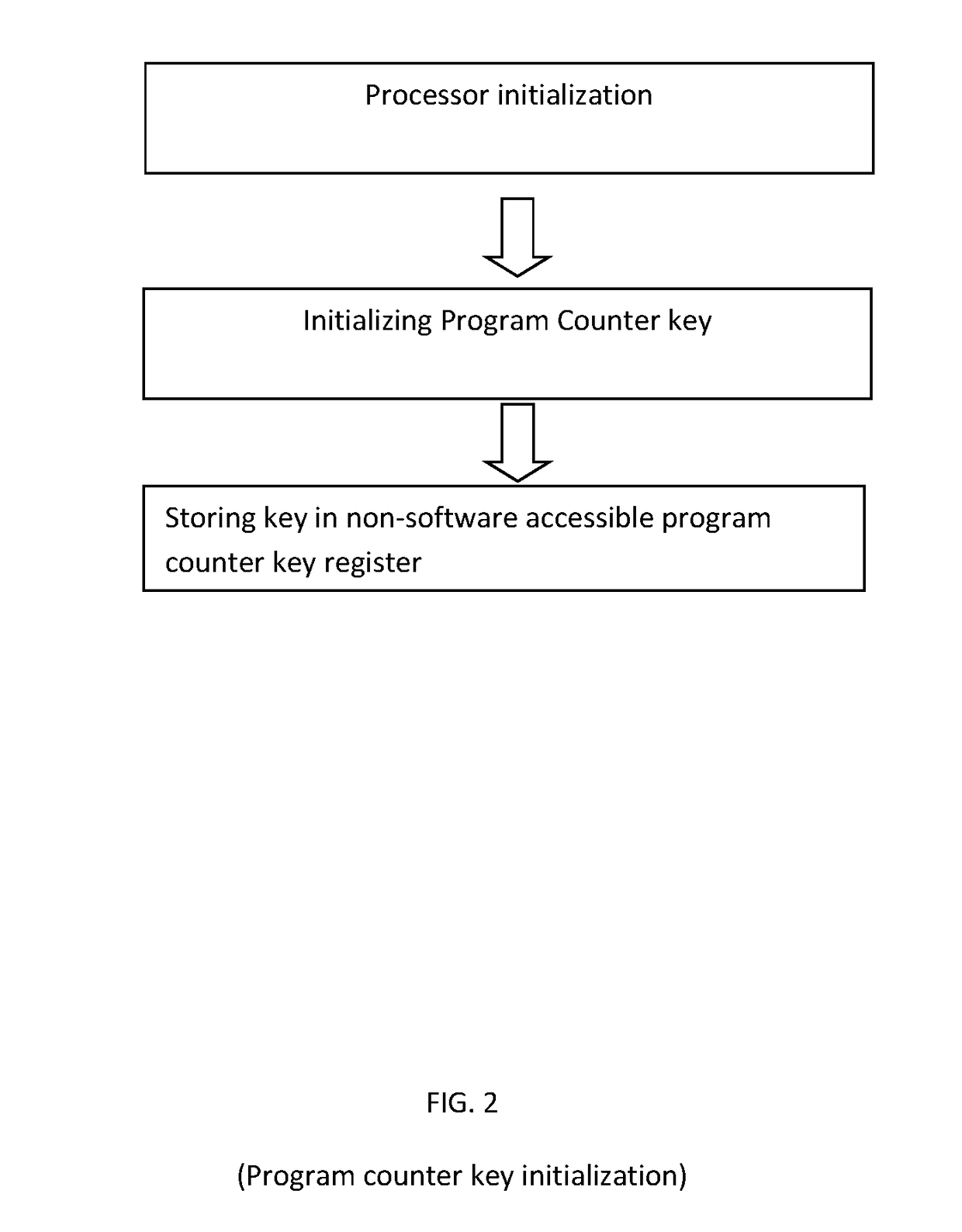System for program counter encryption
a program counter and encryption technology, applied in the field of electronic systems security, can solve the problems of ineffectiveness of standard security mechanisms focusing on executable code, such as instruction stream randomization (isr), and ineffectiveness of aslr for 32-bit processors
- Summary
- Abstract
- Description
- Claims
- Application Information
AI Technical Summary
Benefits of technology
Problems solved by technology
Method used
Image
Examples
Embodiment Construction
[0012]In accordance with one embodiment of the present invention, Program Counter Encryption (PCE) is a described as a method and an implementing system that protects against return-oriented programming attacks and other classes of attacks by manipulating the CPU program counter. With PCE, the CPU encrypts the program counter value whenever it stores it into software-accessible memory or registers. When the CPU later loads the saved value back into the program counter, it decrypts the value. If the value has been tampered with, it will not decrypt properly and the system can take appropriate measures.
[0013]A hardware prototype that incorporates this methodology into the CPU has also been developed. For our prototype, we added a mechanism for generating the encryption key upon initialization and a mechanism for performing the encryption and decryption whenever the CPU saved and loaded the program counter value. We have implemented the modified CPU in a field programmable gate array (...
PUM
 Login to View More
Login to View More Abstract
Description
Claims
Application Information
 Login to View More
Login to View More - R&D
- Intellectual Property
- Life Sciences
- Materials
- Tech Scout
- Unparalleled Data Quality
- Higher Quality Content
- 60% Fewer Hallucinations
Browse by: Latest US Patents, China's latest patents, Technical Efficacy Thesaurus, Application Domain, Technology Topic, Popular Technical Reports.
© 2025 PatSnap. All rights reserved.Legal|Privacy policy|Modern Slavery Act Transparency Statement|Sitemap|About US| Contact US: help@patsnap.com



